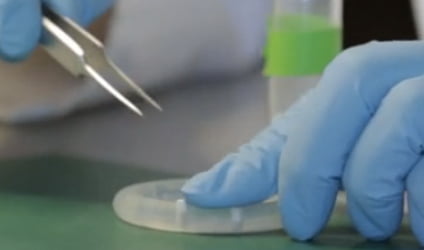Researchers at the Oak Crest Institute of Science have been awarded a $20 million grant from the National Institutes of Health (NIH) to systematically develop an intravaginal ring capable of delivering powerful antiretroviral (ARV) drugs to prevent the spread of sexually transmitted HIV in women.
This five-year grant is funded under the NIH U19 Program, a mechanism that funds collaborative projects involving multiple institutions. Oak Crest is the lead institution in this collaboration that includes teams of researchers from the Centers for Disease Control and Prevention (CDC), the University of Texas Medical Branch, Johns Hopkins Medical Institutions, the University of Colorado, Boulder, Scripps Research Institute, University of California, Los Angeles, Vanderbilt University, Miriam Hospital, and Auritec Pharmaceuticals.
After more than 40 years of research, prevention of HIV infection continues to be a critical global health priority. According to the World Health Organization, there are some 35 million people living with HIV in the world today. Approximately 70 percent of all people living with HIV are from sub-Saharan Africa.
Intravaginal rings, currently available commercially for contraception and hormone replacement therapy, have shown promise as a drug delivery system to prevent HIV infection. However, most designs currently under investigation cannot deliver combinations of the many available ARV drugs developed to combat HIV infection. While combinations of three ARV drugs are highly successful in treatment of HIV/AIDS, their use in an intravaginal ring platform has not been possible until now. Furthermore, the best combination of drugs to prevent sexual HIV infection is not known.
“This Program will allow us, for the first time, to rigorously test a large group of antiretroviral drugs in a systematic fashion so that we can determine what combination is best for preventing sexual HIV via vaginal delivery,” said principal investigator, Marc Baum, Ph.D., president and senior faculty at Oak Crest.
“This project is, in large part, enabled by our pod-intravaginal ring (pod-IVR) platform. We have shown that the platform can deliver five different drugs simultaneously and at independently controlled dosages, which is unlike any other device under development today. In addition, the modular design of our pod-IVRs allows us to accelerate the development of prototypes, a critical element to testing many combinations as part of this Program,” he said. “Our technology platform also has the crucial advantage of scalability in manufacturing as the majority of the fabrication steps are identical regardless of the drug substances in the combination. This scalability and potential for economical manufacture will be crucial for any product to be used in the developing world,” added Dr. Baum.
“We are fortunate to be part of a stellar team of investigators from all over the country. Through this partnership, I feel confident that we will meet our goal of using a novel screening process to scientifically determine the best-performing candidates in order to advance them rapidly into clinical trials,” said Dr. Baum.
Oak Crest has already reached significant milestones in this scientific arena by becoming the first to successfully administer Truvada, the only FDA approved regimen for HIV prevention, from an IVR. This milestone was accomplished in collaboration with the CDC where the novel pod-IVRs were evaluated in pig-tailed macaques over a 28-day period.
Sustained release approaches to drug delivery for the prevention of HIV infection, such as the pod-IVR, is especially appealing for use in the developing world, in contrast to daily therapies, where adherence is often an issue. Such devices are less expensive on a per-patient, per-day basis, they are capable of both rapid and sustained drug delivery for at least a month, and they sustain their effectiveness without refrigeration, an important consideration for use in resource-limited settings.
“The significance of this research is profound. Our goal is to empower women to protect themselves from HIV infection with the best biomedical solution,” said Dr. Baum. “The foundation we have already laid, coupled with the results from this innovative study, will help us accelerate the development of this pre-exposure prophylactic device,” said Dr. Baum. “This process is especially important when considering that for each year we delay, close to a million women in sub-Saharan Africa alone could become infected,” he added.


